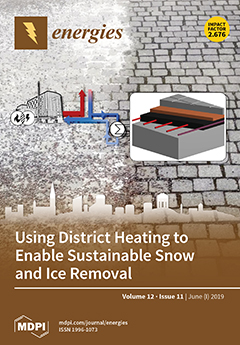This paper proves the soundness of supercritical CO
2 displacement for enhancing gas recovery of a tight gas reservoir via laboratory investigations and compositional modeling. First, a novel phase behavior experimental device with a screened supercritical CO
2 dyeing agent were first presented
[...] Read more.
This paper proves the soundness of supercritical CO
2 displacement for enhancing gas recovery of a tight gas reservoir via laboratory investigations and compositional modeling. First, a novel phase behavior experimental device with a screened supercritical CO
2 dyeing agent were first presented to better understand the mixture characteristics between supercritical CO
2 and natural gas. The mass transfer between two vapor phases was also measured. Then, based on experimental results, the compositional model considering the influence of CO
2 diffusion on the gas recovery and critical property adjustment of supercritical CO
2 was established. The miscibility process and mixing properties, such as density, viscosity, and the flowing velocity vector, of supercriticalCO
2 and natural gas were visualized through a 3D display, which obtained a better understanding of the flooding mechanism of Enhanced Gas Recovery (EGR) via supercritical CO
2. Finally, with experiments and numerical simulations, the main benefits of CO
2 EGR were shown, which were partial miscibility between CO
2 and natural gas, pressure maintenance, and CO
2 displacement as a “gas cushion.” In general, experiments and numerical simulations demonstrate that CO
2 EGR can be seen as a promising way of prolonging the productive life and enhancing recovery of tight gas reservoirs.
Full article





